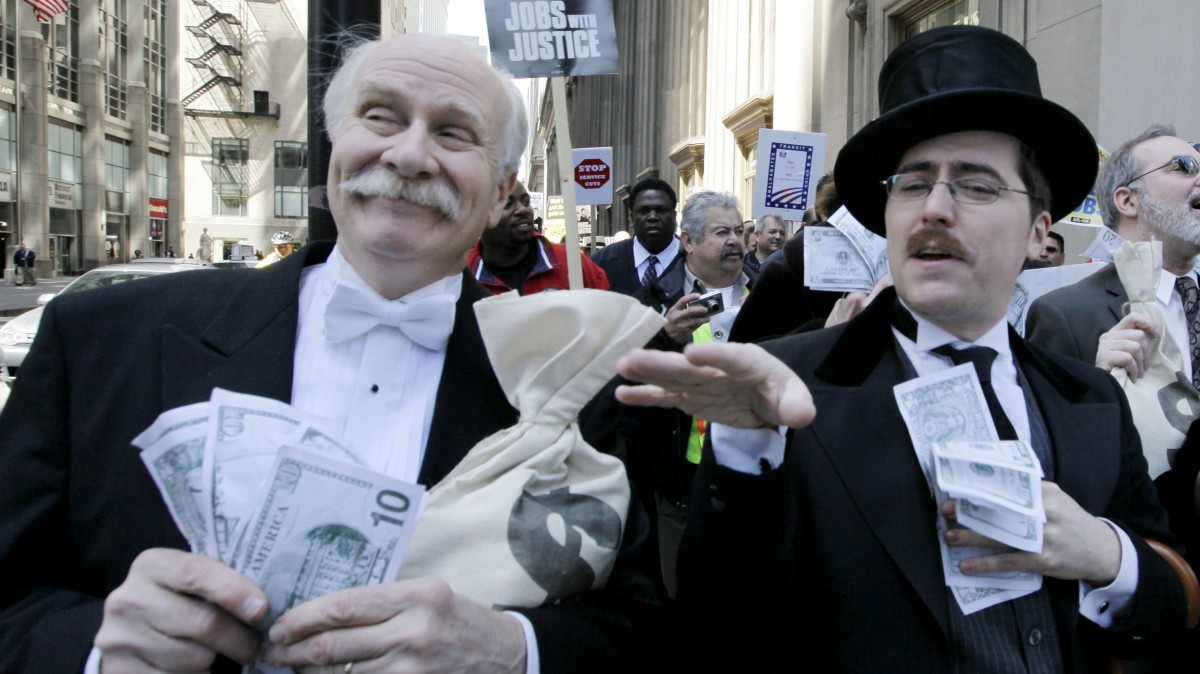A lot of people labor under a misconception that President Donald Trump opposes the Federal Reserve. While the president has leveled a great deal of criticism at the central bank in recent months, he has never opposed the Fed in principle. He’s merely expressed frustration that the central bankers won’t implement the monetary policy he prefers at this time. In fact, Trump wants the Fed to lower interest rates and, in effect, print money, just like it did when Barack Obama was in the White House.
Just before the most recent Federal Open Market Committee meeting, Trump took to Twitter to push the Fed to cut interest rates.
China is adding great stimulus to its economy while at the same time keeping interest rates low. Our Federal Reserve has incessantly lifted interest rates, even though inflation is very low, and instituted a very big dose of quantitative tightening. We have the potential to go…
— Donald J. Trump (@realDonaldTrump) April 30, 2019
….up like a rocket if we did some lowering of rates, like one point, and some quantitative easing. Yes, we are doing very well at 3.2% GDP, but with our wonderfully low inflation, we could be setting major records &, at the same time, make our National Debt start to look small!
— Donald J. Trump (@realDonaldTrump) April 30, 2019
This wasn’t the first time Trump urged the Fed to push interest rates down. A month earlier, Trump directed pretty much the same message toward Federal Reserve Chair Jerome Powell. During an interview, Trump complained about the Fed’s 2018 interest rate increases, saying “they really slowed us down.” Trump emphasized that he wants stimulus and called on the Fed to resume Obama-era quantitative easing (QE).
Well, I personally think the Fed should drop rates. I think they really slowed us down. There’s no inflation. I would say in terms of quantitative tightening, it should actually now be quantitative easing. Very little if any inflation. And I think they should drop rates, and they should get rid of quantitative tightening. You would see a rocket ship. Despite that, we’re doing very well.
Trump also took aim at Powell and the central bank last fall as the stock market went into free-fall. He said, “The problem I have is with the Fed. The Fed is going wild. They’re raising interest rates and it’s ridiculous.” He also said the Fed is “going loco.” The next day, the president doubled down, saying, “I’m paying interest at a high rate because of our Fed. And I’d like our Fed not to be so aggressive because I think they’re making a big mistake.”
These aren’t the comments of a man who opposes central bank manipulations of the economy. These are the comments of a man who wants the central bank to manipulate the economy in a way that benefits him politically.
Ironically, the president’s call on the Federal Reserve to cut rates and resume quantitative easing (in effect, print money) sends extremely mixed messages. On the one hand, the president says the United States has the best economy in the history of forever. But if that’s the case, why would the Fed need to cut rates?
Conventional wisdom dictates that central banks should normalize rates in a strong economy. They cut rates during a recession—as the Fed did in the years after the 2008 financial crisis—to “stimulate” the economy. Once the economy recovers, the central bank gradually brings rates back to “normal,” as mainstream monetary policy prescribes.
Unless Trump wants to argue that a 2.5 percent interest rate is normal—which, of course, is absurd—his call for rate cuts in a “booming” economy doesn’t make sense. He can’t have it both ways. Either the economy is awesome-blossom, or it needs the Fed to intervene.
The Fed’s Monetary Heroin
In the wake of the Great Recession, the Federal Reserve effectively lowered interest rates to zero in 2008 and kept them there for seven years. In 2015, the central bank boosted rates for the first time and followed up with one hike in 2016. It wasn’t until 2017 that the central bank began to normalize in earnest, hiking rates seven times over the next two years. The Fed initiated its last rate increase in December of last year. The Federal Reserve also began to unwind quantitative easing in 2018 by shedding assets from its balance sheet. (For more on quantitative easing and tightening, click here.)
But last fall, the impact of rate hikes and quantitative tightening began to ripple through the economy. The stock market tanked.
In effect, the Federal Reserve spent nearly a decade manufacturing an economic recovery out of piles of debt and by pumping up asset bubbles like the stock market. It accomplished this by creating trillions of dollars in new money out of thin air and pumping it into the economy.
Rising interest rates don’t bode well during a central bank-manufactured boom built on debt. The Fed’s pivot toward tighter monetary policy pricked the bubble. Thus the chaos in the markets during the fourth quarter of 2018.
When the stock market started going down last fall, the Fed did a monetary policy 180. It announced a pause in rate hikes and an end to balance sheet reduction. That stabilized the markets—at least for the time being.
Here’s an analogy that illustrates exactly what the Fed did.
Think of artificially low interest rates and money-printing like heroin. The Fed injects the drug into the economy and makes it high. The partiers have a blast for a while. The economy booms. Asset prices climb. But eventually, everybody realizes the heroin will cause an overdose. At that point, the Fed starts to take the drug away.
We all know what happens when you take a drug away from an addict. He goes into withdrawal. The economy crashes. The bubbles burst. The boom turns into a bust. When things get really bad, the Fed rushes in with more heroin, and the cycle repeats.
We saw this with the dot-com boom-bust in the late ’90s and early 2000s and the real estate boom-bust that followed. Now the economy is in the midst of boom-bust 3.0.
Trump Wants More of the Drug
Trump seemed to understand this when he was on the campaign trail. He accurately called the stock market a “big, fat, ugly bubble.” He questioned the legitimacy of the recovery. But now the president owns the bubble. He branded the “booming” economy with a big Trump “T.” And that means Trump has a problem. If the next crash happens before the 2020 election, it will likely doom his reelection hopes.
This explains Trump’s criticism of the Fed. He wants the kind of monetary stimulus Obama got during the Great Recession in order to keep the bubble inflated until after the election. He needs the central bank to pump more heroin into the addict to keep him going—just a little while longer.
This isn’t about Trump opposing the Fed. This is about Trump using the central bank for political purposes, pretty much like every other politician.
And make no mistake—the longer the economy stays high, the harder it will crash.
Michael Maharrey is the national communications director at the Tenth Amendment Center.
This article was originally published on FEE.org. Read the original article.





4 comments
… [Trackback]
[…] Find More Information here to that Topic: thelibertarianrepublic.com/heed-candidate-trump-not-president-trump-on-fed-matters/ […]
… [Trackback]
[…] Read More on to that Topic: thelibertarianrepublic.com/heed-candidate-trump-not-president-trump-on-fed-matters/ […]
… [Trackback]
[…] There you can find 61843 additional Information to that Topic: thelibertarianrepublic.com/heed-candidate-trump-not-president-trump-on-fed-matters/ […]
… [Trackback]
[…] Find More on that Topic: thelibertarianrepublic.com/heed-candidate-trump-not-president-trump-on-fed-matters/ […]